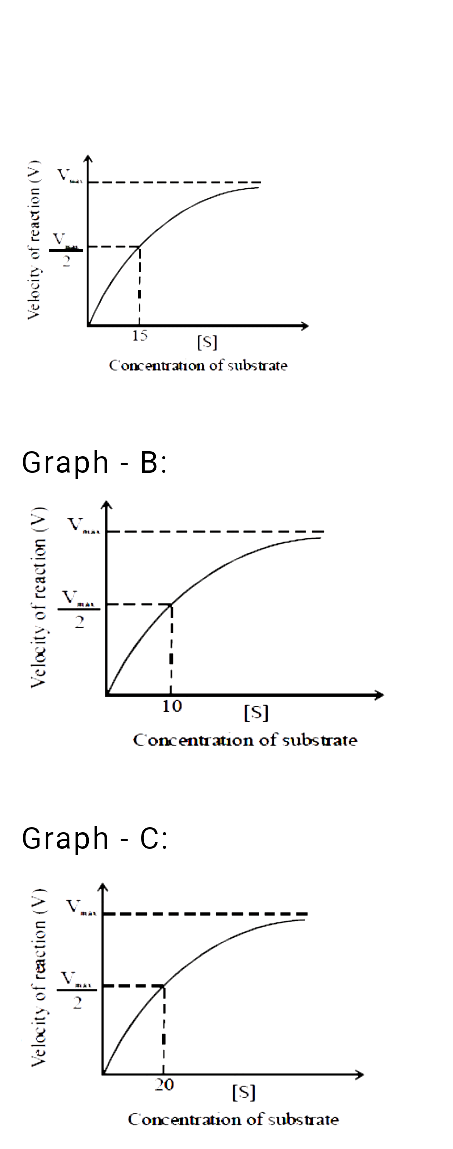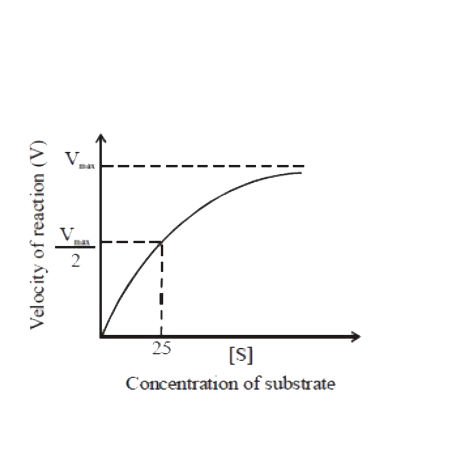An enzyme shows maximum catalytic activity
Above optimum temperature
Below optimum temperature
At optimum temperature
None of the above
The correct Answer is:C
To answer the question "An enzyme shows maximum catalytic activity when," we need to understand the concept of enzyme activity and the factors that influence it. Here’s a step-by-step breakdown of the solution:
1. Understanding Enzymes: Enzymes are biological catalysts that speed up chemical reactions in the body. Each enzyme has a specific structure that allows it to bind to its substrate and facilitate a reaction.
2. Catalytic Activity: The catalytic activity of an enzyme refers to its ability to increase the rate of a reaction. This activity is influenced by various factors, including temperature, pH, and substrate concentration.
3. Optimum Temperature: Each enzyme has an optimum temperature at which it exhibits maximum catalytic activity. This is the temperature range where the enzyme's structure is most stable and its active site is perfectly shaped to bind to the substrate.
4. Typical Optimum Temperature: For most enzymes in the human body, the optimum temperature is around 37 degrees Celsius (98.6 degrees Fahrenheit). At this temperature, the enzyme functions efficiently and the reaction rate is at its peak.
5. Effect of Temperature Changes: If the temperature rises significantly above the optimum (for example, above 40 degrees Celsius), the enzyme may denature, meaning it loses its functional shape and, consequently, its catalytic activity. Conversely, at lower temperatures, the reaction rate may decrease as molecular movement slows down.
6. Conclusion: Therefore, an enzyme shows maximum catalytic activity at its optimum temperature, which is typically around 37 degrees Celsius for human enzymes.
Final Answer:
An enzyme shows maximum catalytic activity at its optimum temperature.
---
An enzyme shows maximum catalytic activity at its optimum temperature.
Topper's Solved these Questions
- BIOMOLECULESBOOK - AAKASH SERIESCHAPTER - BIOMOLECULESEXERCISE - EXERCISE - I (Enzymes -Introduction)
13 Videos
- BIOMOLECULESBOOK - AAKASH SERIESCHAPTER - BIOMOLECULESEXERCISE - EXERCISE - I (Chemical reactions)
4 Videos
- BIOLOGICAL CLASSIFICATIONBOOK - AAKASH SERIESCHAPTER - BIOLOGICAL CLASSIFICATIONEXERCISE - EXERCISE-III (Previous AIPMT/NEET Question)
37 Videos
- CELL CYCLE AND CELL DIVISIONBOOK - AAKASH SERIESCHAPTER - CELL CYCLE AND CELL DIVISIONEXERCISE - Exercise-III
18 Videos
Similar Questions
Metals of how many groups of periodic table show maximum catalytic activity.
View SolutionFollowing graphs show the effect of change in concentration of substrate on enzyme activity:


In which of the above curve,the enzyme shows maximum substrate affinity
View SolutionAn enzyme can perform its catalytic activity in ________ structure
View SolutionRead the given statements and select the correct option.
Statement 1 : Co-factors play a crucial role in the catalytic activity of the enzyme.
Statement 2: Catalytic activity is lost when co-factor is removed from the enzyme.
View SolutionRNA molecules having catalytic activity are called
View SolutionAssertion : All enzymes are not proteins.
Reason : RNA molecules that possess catalytic activity are called ribozymes.
View SolutionEnzymes isolated from organisms which line in extreme high temperatures (eg , hot vents and sulphur springs) show catalytic activity in a 93 94 98 range of
View SolutionIn EMP, hexose sugar splits into two molecules of triose sugar by the catalytic activity of
View SolutionEach enzymes shows the highest activity at a particular temperature and pH called the _____temperature and _____pH respectively.
View SolutionAssertion: It has been found that for hydrogenation reaction the catalytic activity increases from group5 to group-11 metals with maximum activity being shown by groups 7-9 elements of the periodic table. Reason: For 7-9 group elements adsorption rate is maximum.
View Solution
